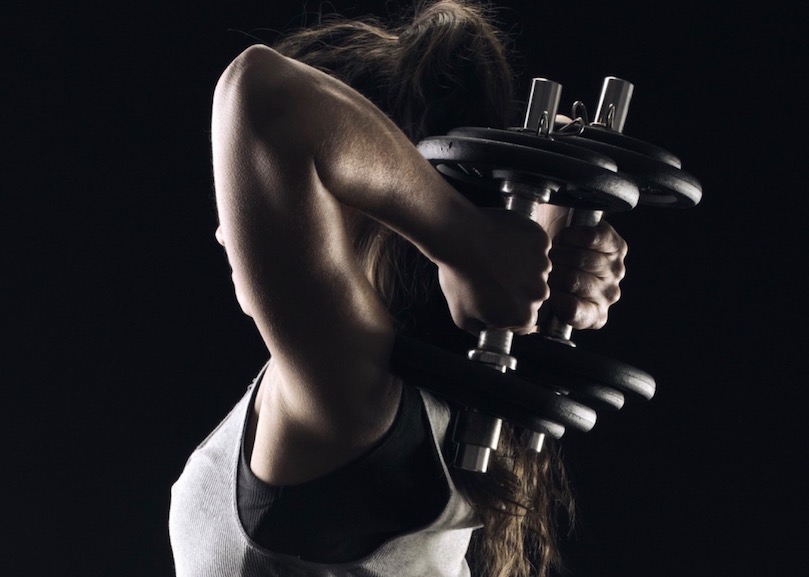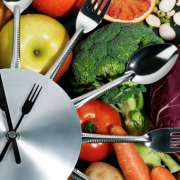Are you exercising regularly and eating sensibly but still finding it difficult to shake the weight? You’re certainly not alone. In fact, over the years I’ve found that a large percentage of individuals with whom I consult are constantly finding themselves in a continuous cycle of losing a little weight here and there and then gaining it all back.
I will say this: The clients who tend to experience this problem the most are women.
Why?
Well, because men just don’t have the same issues women have.
From the time we’re born we’re at a disadvantage. Compared to men, we have little testosterone which naturally makes our bodies a little bit fluffier, our bones are a bit more brittle, and we carry the brunt of pregnancy which can make are battle with weight a lot more challenging.
Now, with all this said, being a woman isn’t an excuse for being overweight.
While some of our weight management issues are due to gender-related factors that are beyond our control, many of them are self-inflicted. You see, men approach weight loss with exercise and dietary strategies that are much different than those of women. They tend to eat more and do more, which is why they’re generally more successful than us when it comes to losing weight.
If you’re finding it especially difficult to lose weight in spite of your exercise and dieting efforts, here are some key strategies that you need to steal from the man’s playbook.
Start Lifting with Heavier Weights
You may perceive some men in the gym as ‘dumb jocks’ but they’re actually much smarter than you think. Why? Well, because they’re successfully managing their body weights by lifting weights. It is a well-known fact that many women shy away from lifting weights and other forms of resistance training out of a fear of bulking up.
This is not a good thing.
Due to its effects on muscle, regular resistance training significantly elevates the metabolic rate and greatly supports weight loss.
The more muscle you have, the higher your metabolic rate meaning, at the end of the day, you’ll burn more calories and lose more weight. Lifting weights also fuels the fat burning process that’s necessary for ridding your body of stubborn fat in your midsection.
Related Article: The Important Role of Metabolism in Weight Loss
So, why lift with heavier weights?
In spite of what many women believe, it’s not the simple act of resistance training that enhances weight loss. To achieve maximum weight loss, you have to push yourself to a point of discomfort. In other words, make an effort to lift with weights that actually fatigue your muscles as opposed to loads that aren’t heavier than your purse.
Lifting heavier simply means that you’re working at a high enough intensity to create significant muscle fatigue. A highly intense resistance training session can elevate the metabolic rate for up to 12 hours, which means you’ll burn more calories during any given activity, even at rest.
Related Article: How to Incorporate Resistance Training Into Your Workouts
If you can lift a given weight for more than 20-25 repetitions, over and over again, it’s time to up the ante. My book outlines efficient and effective strategies for incorporating resistance training into your weight loss program.
Stop All the Cardio Already
Have you ever seen a man on an elliptical machine for over an hour? Nine times out of ten the answer is no. Too bad the same can’t be said for women, which is another reason why we don’t lose weight like men. In an effort to burn as many calories as possible for maximal weight loss, many women tend to overdo it with cardio exercise.
I’m totally guilty of doing this from time to time, as I’m a runner. There’s just something about that sweat rolling down my face at the completion of an hour-plus run as I eagerly anticipate the final calorie count readout on my fitness-tracking device.
Unfortunately, performing excessive amounts of cardio will eventually lead to muscle wasting, especially if this is done while restricting food intake.
Excessive cardio combined with calorie restriction leads to extreme calorie deficiencies, which, over time, trigger a starvation response that inhibits fat burning. When this occurs, the body steals protein from muscle tissue for caloric energy.
Related Article: The Role of Protein During Dieting
These effects are further augmented when you don’t incorporate resistance training into your exercise program, as the muscle wasting that occurs ultimately comprises the metabolic rate. While you’ll lose weight during this process, you’ll likely gain the weight back once you cut the cardio minutes and resume your normal eating habits due to a reduced metabolic rate.
Not only does this practice have a negative impact on the metabolic rate, but it also enhances the appearance of excess body flab during weight loss due to muscle wasting.
Related Article: How to Lose Weight Without Getting Flabby Skin
Be Less Finicky with Your Eating
Regardless of whether or not weight loss is a goal, most men are always going to eat. This goes contrary to the natural tendencies of women who feel as though weight loss can only be achieved by, in some way or another, restricting food intake.
All my female clients have come to me with weight management issues they’ve attempted to remedy with finicky eating.
They are the first to claim that they’ve adopted a vegetarian lifestyle while regularly incorporating French fries and refined breads into their daily diet. Some get on the smoothie/shake kick, which, for many means throwing a bunch of fruit in a blender with a scoop of protein powder for sustenance.
Another breed of women healthy eaters are the fat-free fanatics who purchase any product labeled ‘fat-free’ regardless of the sugar or sodium content.
Related Article: Seven Food Labeling Tactics That Are Making People Sick
And, finally, there are those women who I like to classify as the simple low-calorie eaters. These are the women who eat anything they want so long as it’s within their calorie budget. Low-calorie eaters are those women who will opt for a 100-calorie pack of processed crackers over a 200-calorie serving of walnuts due to the calorie difference.
Such eating habits are a huge culprit in women’s inability to lose weight and maintain a weight loss. Unlike men, we as women want rules, we want routine, and we can’t just go with the flow. The day I was able to successfully manage my weight for good was the day that I made a conscious choice to eat flexibly, eat sensibly, and eat well.
To eat sensibly, I monitor my portions with occasional calorie counting. Most of the time I eat one large meal a day and sometimes even two. It doesn’t matter so long as I’m obtaining all the nutrients I need in a day. I don’t use labels. I’m not a vegetarian, pescatarian, or so-called ‘clean eater’ – I just eat well. These are the behaviors that I encourage among other women.
Related Article: Intermittent Fasting: How I Control My Weight By Eating One Meal a Day
When it comes to weight loss, eating a healthy, balanced diet is key. Make an effort to take in sizeable portions of high-quality carbohydrates (fresh vegetables and fruits, beans and whole-grain products) every day and be sure to also consume adequate amounts of protein-rich foods that are low in unhealthy fats (fish and seafood, skinless poultry, lean meat, soy foods, and eggs).
Related Article: A Simple Guide to Eating Sensibly
Its also important that you’re consuming substantial amounts of healthy fats in the forms of monounsaturated fat and polyunsaturated fat (omega-3 fatty acids). Foods rich in these fats include olive oil, avocado and oily fish (salmon, tuna and trout). A diet rich in healthy fats helps to increase the rate at which stored fat is broken down and essentially burned to produce energy, which leads to weight loss.
Related Article: Belly Fat: Five Ways to Lose the Pooch
The Net-Net
We as women have no control over our gender; however, our lifestyles are totally under our control. Incorporate the exercise and dietary strategies I’ve described and you’ll achieve the sustained weight loss success that’s experienced by our male counterparts.







